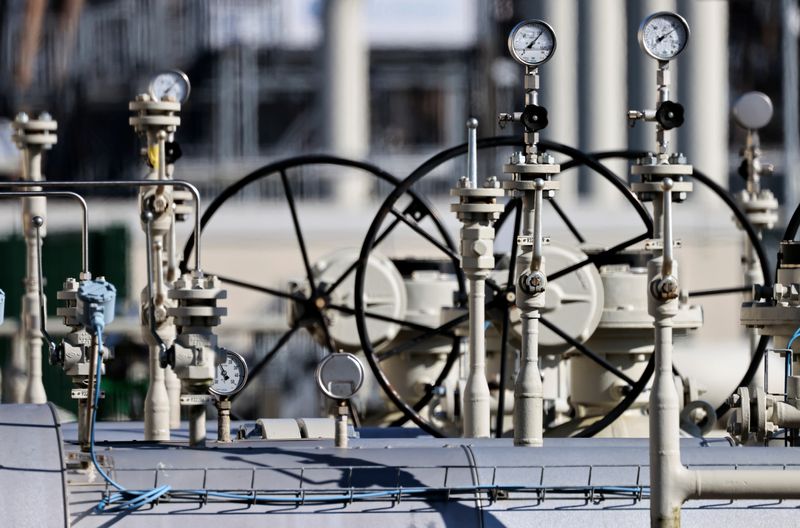Germany risks recession as Russian gas crisis deepens
2022.06.21 13:50

FILE PHOTO: Pipes at the landfall facilities of the ‘Nord Stream 1’ gas pipeline are pictured in Lubmin, Germany, March 8, 2022. REUTERS/Hannibal Hanschke/File Photo
By Rachel More and Stine Jacobsen
BERLIN/COPENHAGEN (Reuters) – Germany faces certain recession if already faltering Russian gas supplies completely stop, an industry body warned on Tuesday, as Sweden joined a growing list of European nations rolling out emergency plans to cope with a deepening energy supply crisis.
European Union countries from the Baltic Sea in the north to the Adriatic coast in the south have been outlining measures to cope with a supply crisis after Russia’s invasion of Ukraine.
The EU relied on Russia for as much as 40% of its gas needs before the war – rising to 55% for Germany – leaving a huge gap to fill in an already tight global gas market. Some states have temporarily reversed plans to shut coal power plants as a result.
Global gas prices have sky-rocketed, driving surging inflation higher still and creating a bigger headache for policy makers trying to haul Europe back from an economic precipice.
Germany’s BDI industry association slashed its economic growth forecast for 2022 on Tuesday to 1.5%, revising it down from 3.5% expected before the war. It said a halt in Russian gas deliveries would make recession inevitable.
Russian gas is still being pumped via Ukraine but at a reduced rate and the Nord Stream 1 pipeline under the Baltic, a vital supply route to Germany, is working at just 40% capacity, which Moscow says is because Western sanctions are hindering repairs. Europe says this is a pretext to reduce flows.
Germany, like Denmark, Austria, the Netherlands, Italy and others, has activated the first early warning stage of its three-stage plan to cope with a gas supply crisis.
RACING TO REFILL INVENTORIES
The German gas regulator, the Bundesnetzagentur, said on Tuesday it was not yet time to declare an all-out emergency, or the third stage, that would see the country ration gas to industry to protect vital services and households.
“I am very much in favour of carefully examining when the right time is for the highest alert level,” Bundesnetzagentur chief Klaus Mueller told German broadcaster BR.
Europe has been racing to refill gas storage facilities, now about 55% full, to meet an EU-wide target of 80% by October and 90% by November, a level that would help see the bloc through winter if supplies slowed further or were halted.
But reduced Nord Stream 1 pipeline flows and disruptions to a major U.S. producer of liquefied natural gas that provided shipments to Europe have made those targets harder to meet.
The benchmark gas price for Europe was trading around 126 euros ($133) per megawatt hour (MWh) on Tuesday, below this year’s peak of 335 euros but still up more than 300% on its level a year ago.
The sky-high European price has attracted more LNG cargoes, but European nations lack the infrastructure to meet all its needs from LNG, while the global LNG market is already stretched.
Europe is also seeking more pipeline supplies from its own producers, such as Norway, and other states, such as Azerbaijan.
Sweden, despite being a small gas user, has nevertheless joined others on Tuesday in triggering the first stage of its energy crisis plan.
The state energy agency said supplies remained robust but its move signalled “to industry players and gas consumers connected to the western Swedish gas network, that the gas market is strained and a deteriorating gas supply situation may arise.”
Sweden, where gas accounted for just 3% of energy consumption in 2020, depends on piped gas supplies from Denmark, where storage facilities are now 75% full. Denmark activated the first stage of its emergency plan on Monday.
($1 = 0.9457 euros)








